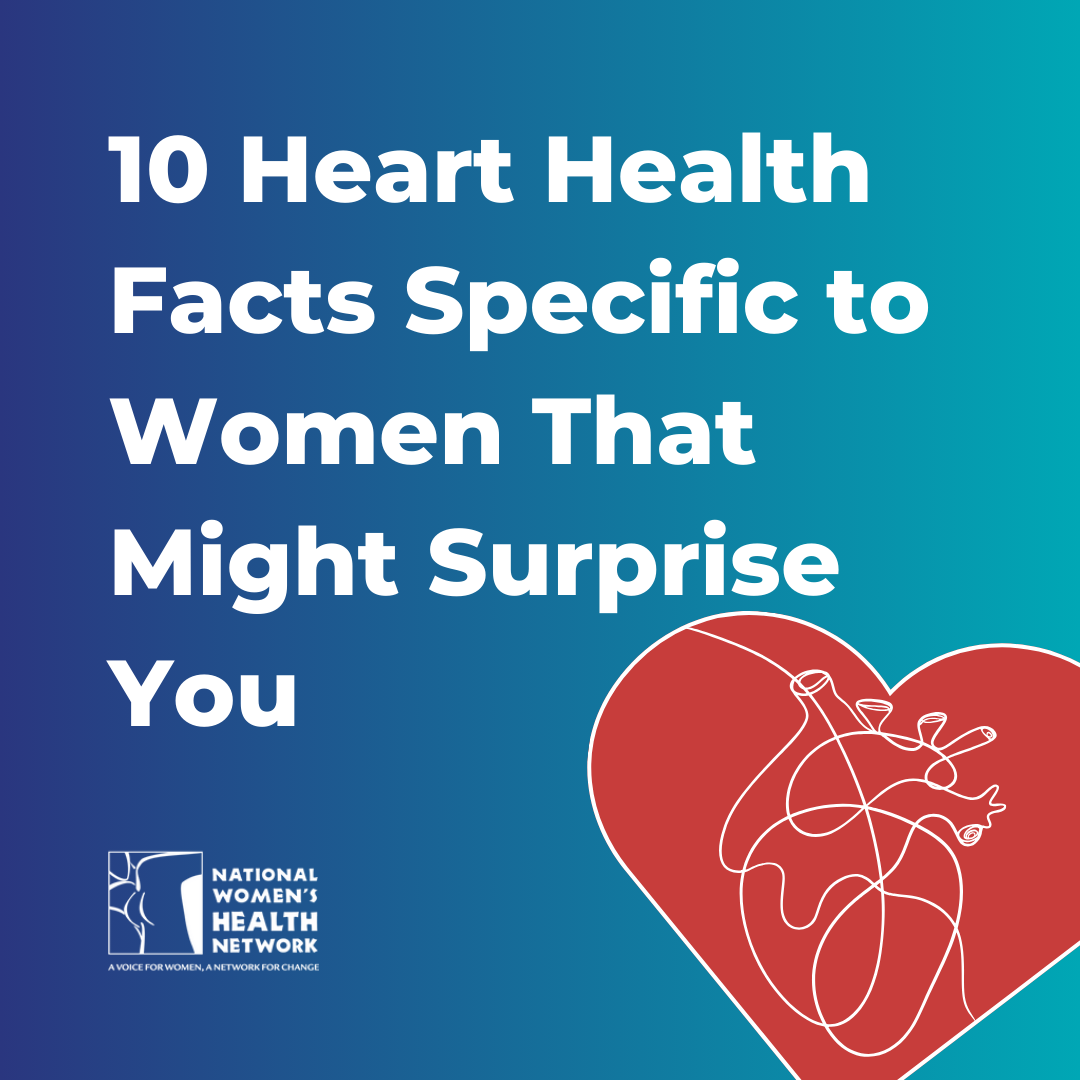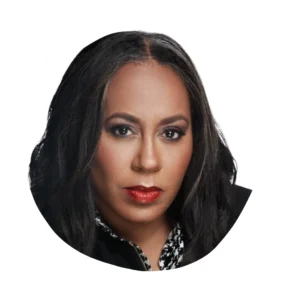
Consumer Health Info, Deep Dive Articles, Health Info
10 Heart Health Facts Specific to Women That Might Surprise You
February 14, 2024
---
Deep Dive Articles, Health Info, Testimony
Publication Date: April 12, 2023
By: Denise Hyater-Lindenmuth, Executive Director of the National Women’s Health Network

 As the former Executive Director of the American Cancer Society, I can confidently say I’m cancer-literate. I get mammograms at the recommended intervals. I do breast self-exams religiously. I thought for sure that, should lumps show up in my breasts, I would easily find them.
As the former Executive Director of the American Cancer Society, I can confidently say I’m cancer-literate. I get mammograms at the recommended intervals. I do breast self-exams religiously. I thought for sure that, should lumps show up in my breasts, I would easily find them.
I was wrong.
Instead, I only found out about my life-threatening illness after a gym injury. Having suffered an eye-watering rupture of my Achilles tendon, I was lying down at home with an inflatable cast and icing the torn tendon ahead of my surgery.
It was only thanks to this unconventional resting position that I became aware of a concerning lump in my breast. As my hand pressed against my chest, I felt fear but also confusion. How had this happened? I paid attention. I did everything right.
After arranging for a quick exam, my worst fears were realized when I received a diagnosis of breast cancer in 2011.
Further tests confirmed it to be triple-negative, an aggressive subtype of invasive breast cancer that disproportionately affects Black women (i).
Only a year before my diagnosis, I had walked away from a routine mammogram without major concern. A suspicious dot had shown up on the film, but a follow-up with a radiologist led to a diagnosis of a benign calcification. Nobody on my medical team at the time alerted me to the fact that I had dense breasts, which increases the likelihood that cancerous tissue will be missed by mammography (ii).
I know now that people with denser breasts have a higher breast cancer risk and that dense breasts are significantly more prevalent in Black women than in white women (iii). When detected early, breast cancer can have a five-year survival rate of 99%, but when detected at a late stage and after it has metastasized to other parts of the body, five-year survival is under 30% (iv). Due to the aforementioned difficulties in detecting dense tissue with conventional X-ray-based mammography, this is especially worrisome for those with dense breast tissue. It scares me to think how different my prognosis might have been had it not been for the bizarre set of circumstances that aided the early discovery of my lump.
The day I got diagnosed was, as it turned out, the very last day Georgetown University Hospital was accepting tissues for their new clinical trial for the treatment of triple-negative breast cancer. Knowing I was an ideal candidate for the drug they were testing, the research team was proactive in presenting me with the opportunity to participate. I am extremely grateful for this. My work in public health taught me that many people have to research appropriate clinical trials themselves. The fact that Georgetown did the groundwork to identify me quickly as a qualified subject meant I could enter the trial before the deadline.
Despite the time crunch, however, I never felt rushed by my medical team. In fact, the trial team spent over an hour with me, answering all my questions about the risks and benefits of entering the trial so that by the time I volunteered, I was 100% confident I was giving informed consent. And once I volunteered, they moved heaven and earth to send off the tissues that day, whilst a team of medical professionals came together like a flock of angels to guide me through the whole process.
After volunteering to be in the trial, the Georgetown medical team took care of everything. I carried no cost for the holistic treatment of my cancer. I did the trial chemotherapy first so they could determine the rate at which the cancer cells disappeared. I was given low doses every week, which allowed me to continue working and maintain my energy levels. This was followed by surgery and radiation.
I am happy to report that the trial chemotherapy was effective for me. It eliminated the cancer in eight weeks, and I have been living cancer-free for over five years now. I was later told that my care team was in tears when they learned how successful the treatment was for me.
Current clinical guidelines recommend that breast screening begins at age 40 (with more conservative guidelines recommending age 50) (v). At either age, a gap emerges between when women are advised to start screening and when Medicare begins paying for it. Women, therefore, must either rely on private insurance that will cover the costs or must pay for screening out of their own pockets. These cost barriers significantly impede the early detection of breast cancer; in a recent survey conducted by the American Cancer Society, over 80% of cancer patients and survivors have taken steps to address their health care costs, with the plurality (44%) taking money out of savings to pay for their health care and 36% accumulating credit card debt to pay for health care expenses (vi).
To address key cost barriers contributing to this equity issue, congressional Representatives Rosa DeLauro and Brian Fitzpatrick introduced the Find it Early Act earlier this year. This is federal legislation that, if passed into law, would ensure all health insurance plans cover screening and diagnostic mammograms, breast ultrasounds, and MRIs with no cost-sharing. Here at the Network, we fully support The Find It Early Act. It would ensure that we are no longer leaving it “to chance” that higher-risk women like myself will discover their cancer, and we can proactively begin cancer care where needed before their survival rate is impacted.
Many factors play into cancer risk and severity, from race and gender (vii) to social determinants of health, like exposure to a hazardous environment (viii). Black women like myself diagnosed with breast cancer, for example, have a 42% higher mortality rate than their white counterparts (ix). This diversity in risk factors and prognoses makes it absolutely vital that people in all their diversities participate in clinical trials – and yet many populations remain critically underrepresented in the research. Women account for just 38% of cancer trial studies despite representing 50% of the population. Black people represent only 3% of participants in clinical trials that led to FDA approval of cancer drugs between 2008 and 2018 (x).
So, why are Black women so rare in clinical trials like the one that saved my life? For one, communities of color are distrustful. The U.S. has a long history of conducting ethically dubious studies on unsuspecting minority populations. One such study only gave out the cure for syphilis to half a cohort of Black men despite knowing the other half would die if left untreated (xi). Another stole the cells of Henrietta Lacks, which are still contributing to biomedical research today (xii). These stories have left their mark on American memory; a recent survey revealed that only 56% of Black women have positive attitudes towards clinical trials, and almost one-third of black women agreed that scientists, in general, cannot be trusted (xiii).
This trust and fear gap can be bridged – but it will take time, patience, and proactive work on the part of the medical establishment. Providers need to spend the extra minutes – or hours, in my case – building rapport with patients, learning about the populations they serve, and creating an environment of transparency so patients can give informed consent to treatment.
Most significantly, my clinical trial experience was a perfect model for informed consent (xiv). Under the law, to give fully informed consent for any medical procedure, including a clinical trial, you should be told:
There were dozens of side effects and possible outcomes from my chemo, and I made sure to go through every single one, asking about its likelihood and impact. My questions were answered in a way that made me feel more comfortable making the decision, and I could speak to my surgeon for as long as it took to get through them. At the end of the day, the benefits of my doing the clinical trial far outweighed the risks. I wanted to have longevity. I wanted to meet my future grandkids. I wasn’t done. Participating in a trial gave me a real shot at a second chance.
Another factor that greatly increased my willingness to participate in the clinical trial was that I was able to do so at no cost.
The average cost of breast cancer treatment in the U.S. for people with insurance is upwards of $5,000 a year (xv). This figure doesn’t account for the lost income that often occurs during treatment due to time taken off work for illness and travel-related reasons. Between my health insurance and the research sponsor, Georgetown University, the full cost of my participation in the trial was covered. In this case, research costs included things like the study drug, lab tests performed for research purposes, etc.
Although it is not mandatory that the research sponsor covers costs such as these, it is customary (xvi), and definitely something you will want to ask about when considering participating in a clinical trial. My clinical trial team also worked with me to map out a personalized treatment plan that minimized the risk that I would have to take off work due to treatment-related illness, another factor that increased my willingness to participate and led to my overall satisfaction with the experience.
Ultimately, this is about saving women’s lives and making sure that everyone has access to high-quality, affordable health care – and we can all help make that happen. I encourage all our supporters to contact their representatives to inform them of your support for the Find It Early act and that you want to see it passed into law. This, combined with addressing and improving Black women’s representation in breast cancer clinical trials is mission critical. Only when this improves, will we be able to gain a deeper understanding of tumor biology and its variations so we can begin to reduce existing care disparities.
###
The National Women’s Health Network is supported by our members. We fight for a world where we all have access to high-quality, affordable health care by shaping policy at the federal level, funding and training grassroots health organizations, and providing accurate, reliable health information to the public.
